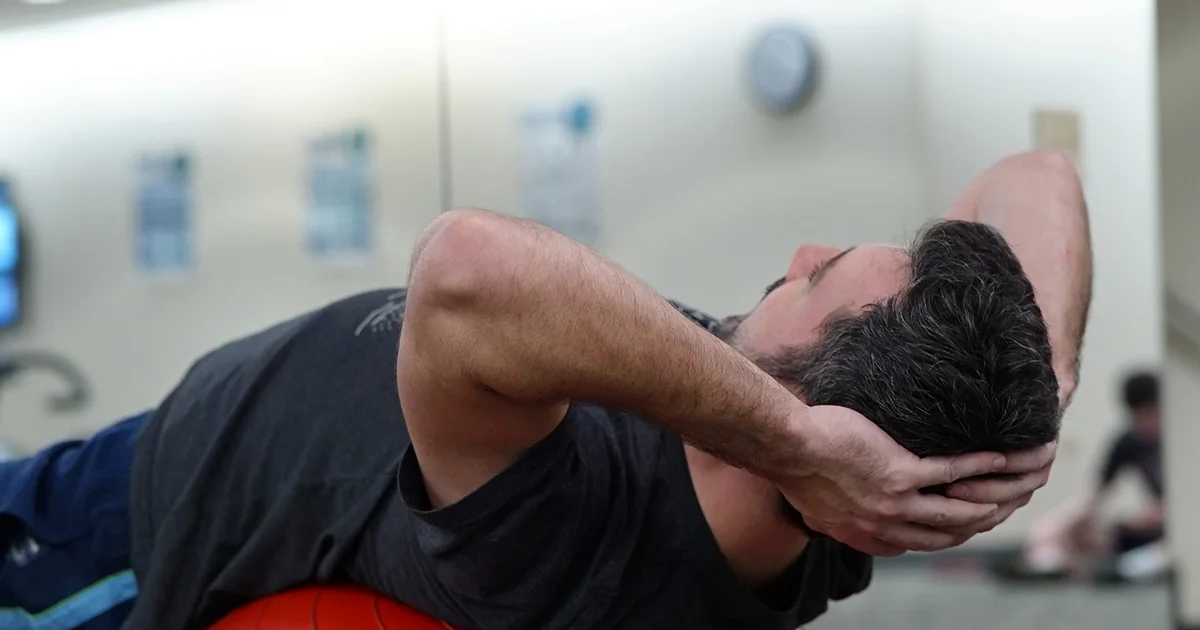Here's what we'll cover
Here's what we'll cover
Here's a riddle: What do breakfast cereal, sardines, and a day at the beach have in common? You guessed it. They can all give you your daily dose of vitamin D. But if you're like many Americans, you might be a little lacking in this department. Not getting enough vitamin D can have serious consequences for your health, but before you start popping pills or book an Airbnb in Florida for the weekend, read on to learn about the symptoms of vitamin D deficiency and how to find out if you have it.
What are the symptoms of vitamin D deficiency?
For adults, the most common symptoms of vitamin D deficiency are actually subtle and will likely go unnoticed by you and even your healthcare provider if they aren't looking for it. Low vitamin D typically throws off the balance of other vitamins and certain hormones in your body which can have slow but progressively damaging effects on your bones if not corrected. But prolonged, severe vitamin D deficiency can be more dramatic, resulting in a condition known as osteomalacia or bone softening. This can increase your chance of fractures and bone pain and requires treatment. For infants and young children whose bones are still rapidly developing, a vitamin D deficiency can cause a condition known as rickets, which can seriously harm proper bone growth and cause lifelong skeletal problems.
What is vitamin D and what causes a deficiency?
Often called the “sunshine vitamin,” vitamin D primarily functions to improve calcium absorption in your body and create strong bones. But you have vitamin D receptors on cells all over your body. As a result, many clinical trials are looking into the role of vitamin D in heart disease, immune system health, muscle strength, and more.
Around 40% of adults in the United States have a vitamin D deficiency. But the problem is more common among people with darker skin. People of color have a higher risk (around 70–80%) of having low vitamin D levels (Forrest, 2011).
Why is this? Your body uses the ultraviolet (UV) light from the sun to make most of the vitamin D your body needs. If you have darker skin, less UV light reaches your cells, leading to low vitamin D levels (Sizar, 2020).
Another cause of vitamin D deficiency is that people don’t spend as much time in the sun anymore. The rise in concern over skin cancer has diminished the already small amount of time people spend outside. Coupled with a shift to more office work, we may not be getting enough sun for adequate vitamin D production. During cold winter months, when we spend most of our time indoors or covered up when we're outdoors, our skin makes almost no vitamin D at all.
Luckily, though, you don't need to do double tanning duty to make up for it. Our bodies can get vitamin D from the foods we eat. Eating fatty fish and eggs, vitamin D fortified milk, and taking multivitamins are all ways to up your vitamin D intake.
However, vitamin D has to be converted to its active form in the liver and kidneys. Different health problems can affect this process. Medical issues such as Crohn’s disease and celiac disease may contribute to a lower amount of vitamin D as these conditions prevent the absorption of vitamin D from food (Sizar, 2020).
What are normal levels of vitamin D for adults?
While levels may vary depending on who you ask, the current consensus among healthcare professionals is that adults need to have between 20 and 40 ng/mL (50 to 100 nmol/L) of vitamin D in their blood and anything below 20 ng/mL is considered a deficiency (NIH, 2021).
To maintain those normal levels, the recommendation is that most adults get 600 international units (IU) of vitamin D per day; people over 71 may require up to 800 IU per day (NIH, 2021). People with a deficiency may need to take more to catch up.
Bone loss
The primary role of vitamin D is to support bone health. It helps you absorb calcium and phosphate, two minerals necessary for healthy bones. Vitamin D is vital to maintaining the balance of bone growth and resorption. Without enough vitamin D, your calcium levels drop, thereby triggering bone breakdown—this leads to thin and brittle bones, also known as osteomalacia. Osteomalacia can also cause bone pain and muscle pain. Low vitamin D levels may also contribute to osteoporosis in older adults (Dawson-Hughes, 2020).
In addition to osteomalacia, vitamin D deficiency in children can also lead to a medical condition called rickets. Rickets happens when growing bones don’t get enough calcium and phosphate. Without these essential minerals, the bone does not harden or mineralize, leading to bone softening and weakening. Symptoms of rickets include delayed growth, bow legs, weakness, and back pain (Misra, 2020). The risk of rickets is so serious in children that infants who are exclusively breastfed should receive vitamin D supplementation since breastmilk has low levels of vitamin D.
Bone pain
Given its importance to bone health, it is not surprising that bone pain can be a symptom in people who are vitamin D deficient. Both osteomalacia and rickets can cause bone pain.
Other possible symptoms
There has been research around a huge range of conditions and their association with vitamin D deficiency. These include:
Getting sick often or having a weakened immune system
Fatigue
Depression
Muscle weakness
High blood pressure
Cardiovascular disease
Depression and anxiety
Diabetes
Lung problems
Cancer
Multiple sclerosis
Currently, there's isn't enough evidence to support the use of vitamin D as a treatment for any of these conditions, or to claim that supplementing with vitamin D reduces your chance of developing the conditions to begin with (Bouillon, 2021).
Since so many people have a relative deficiency in this vitamin, especially people who live far from the equator, it's possible that studies examining the presence of other diseases happen to find a deficiency in vitamin D in people with other conditions. For example, there have been multiple studies examining the connection between vitamin D deficiency and asthma. Some studies found that a deficiency increases your risk of asthma while others found that a deficiency decreases your risk of asthma (Castro, 2014; Bouillon, 2021). Further research examining the use of vitamin D as a treatment to prevent asthma showed no benefit (Litonjua, 2020).
While there are some claims that vitamin D deficiency might increase a person's risk of developing COVID-19, the evidence there is shaky as well. Trials have not shown any benefits to treating people with COVID with vitamin D if they don't have a deficiency. Also, there's no evidence that taking more than the recommended daily amount of this vitamin prevents the risk of serious complications of COVID-19 (Hastie, 2020).
All of this research can be confusing, and more research is needed before any solid conclusions can be drawn about the role of vitamin D in various other conditions.
Risk factors for vitamin D deficiency
Anyone, regardless of race, age, country of residence, etc., can have low vitamin D levels. In general, vitamin D deficiency is pretty rare in developed countries. However, certain factors increase the risk of vitamin D deficiency. People at increased risk of deficiency include (Dawson-Hughes, 2020):
Older adults
Infants
People with limited sun exposure
Those who live in high latitude areas or places with poor air quality
People with darker skin pigmentation
People with obesity
Those taking certain medications (like phenytoin) that speed up vitamin D breakdown
People staying long-term in a hospital or nursing home
Those with digestive or kidney problems, like inflammatory bowel disease and celiac disease, that disrupt vitamin D absorption
Certain other lifestyle and cultural factors that reduce skin sunlight exposure can be involved, too.
Treatment and prevention of vitamin D deficiency
If you suspect you have low vitamin D values, talk to your healthcare provider. You may need to get blood tests to check your levels (which you may see written as 25-hydroxy-vitamin D or abbreviated as 25(OH)D).
Deficiency sometimes requires a short-time regimen of vitamin D supplementation under the guidance of a medical professional. Most providers replace vitamin D using cholecalciferol (vitamin D3) tablets, although ergocalciferol (vitamin D2) is also an option. If you suspect you have a deficiency, it's important to get tested first. If your levels are normal, adding excess vitamin D to your system can actually be a bad thing and result in a condition called vitamin D toxicity (Dawson-Hughes, 2020).
You may be tempted to spend more time in the sun to get more vitamin D. While sunlight can serve as a primary source of the vitamin, sitting in the sun for too long can cause skin damage and even cancer. You should always wear sunscreen to protect yourself from the dangers of UV light. The safest and easiest method for prevention may be in the kitchen.
Stock up on good food sources of vitamin D, such as fatty fish (like sockeye salmon, mackerel, cod liver oil, and herring), egg yolks, beef liver, dairy products, and fortified foods (orange juice and certain breakfast cereals).
If you suspect you might have a vitamin D deficiency, speak to a healthcare provider about getting tested. Upping your intake is simple and straightforward and can have a serious impact on your health if you have a deficiency.
DISCLAIMER
If you have any medical questions or concerns, please talk to your healthcare provider. The articles on Health Guide are underpinned by peer-reviewed research and information drawn from medical societies and governmental agencies. However, they are not a substitute for professional medical advice, diagnosis, or treatment.
Bouillon, R. (2021). Vitamin D and extraskeletal health. In UptoDate . Rosen, C.J. and Mulder, J.E. (Eds.). Retrieved from https://www.uptodate.com/contents/vitamin-d-and-extraskeletal-health
Forrest, K. Y., & Stuhldreher, W. L. (2011). Prevalence and correlates of vitamin D deficiency in US adults. Nutrition Research, 31 (1), 48–54. doi: 10.1016/j.nutres.2010.12.001. Retrieved from https://pubmed.ncbi.nlm.nih.gov/21310306/
Hastie, C. E., Mackay, D. F., Ho, F., Celis-Morales, C. A., Katikireddi, S. V., Niedzwiedz, C. L., Jani, B. D., Welsh, P., Mair, F. S., Gray, S. R., O'Donnell, C. A., Gill, J. M., Sattar, N., & Pell, J. P. (2020). Vitamin D concentrations and COVID-19 infection in UK Biobank. Diabetes & metabolic syndrome , 14 (4), 561–565. doi: 10.1016/j.dsx.2020.04.050. Retrieved from https://pubmed.ncbi.nlm.nih.gov/32413819/
Litonjua, A. A., Carey, V. J., Laranjo, N., Stubbs, B. J., Mirzakhani, H., O'Connor, G. T., Sandel, M., Beigelman, A., Bacharier, L. B., Zeiger, R. S., Schatz, M., Hollis, B. W., & Weiss, S. T. (2020). Six-Year Follow-up of a Trial of Antenatal Vitamin D for Asthma Reduction. The New England journal of medicine , 382 (6), 525–533. doi: 10.1056/NEJMoa1906137 Retrieved from: https://pubmed.ncbi.nlm.nih.gov/32023372/
Martineau, A. R., Jolliffe, D. A., Hooper, R. L., Greenberg, L., Aloia, J. F., Bergman, P., et al. (2017). Vitamin D supplementation to prevent acute respiratory tract infections: systematic review and meta-analysis of individual participant data. BMJ (Clinical research ed.), 356 , i6583. doi: 10.1136/bmj.i6583. Retrieved from https://pubmed.ncbi.nlm.nih.gov/28202713/
Misra, M. (2020) Vitamin D insufficiency and deficiency in children and adolescents. In UptoDate . Motil, K.J., Drezner, M.K, and Hoppin, A. G. (Eds.). Retrieved from https://www.uptodate.com/contents/vitamin-d-insufficiency-and-deficiency-in-children-and-adolescents
National Institutes of Health (NIH), Office of Dietary Supplements – Vitamin D. (2021). Retrieved Apr 28, 2021 from https://ods.od.nih.gov/factsheets/VitaminD-HealthProfessional/
Sizar O, Khare S, Goyal A, et al. Vitamin D Deficiency. (2020). In: StatPearls [Internet]. Treasure Island (FL): StatPearls Publishing; 2020 Jan-. Retrieved Apr 29, 2021 from: https://www.ncbi.nlm.nih.gov/books/NBK532266/










